How to grow Enkianthus
Native to China , Japan, Nepal, Tibet and Vietnam there are 13 species in this genus within the Magnoliidae family. All are ericaceous plants preferring acidic soils which are moist yet well drained. Dry soils can cause leaf edge browning.
Enkianthus are known for their upright medium shrub sized habit. They have bright green deciduous leaves which take on a spectacular flaming display in autumn in shades of red, orange and yellow. Their leaves often occur at the end of the branches in clustered whorls, leaving the plant shape quite open.
Flowering In late spring to early summer with a display of delicate campanula like bell shaped flowers which are nectar rich providing food for bees and other pollinators. The pendant flower cluster hangs in a corymbose raceme with petals in colours from white to yellowish red dependent upon variety.
Upon pollination and during the seed capsule’s development in several species, the section of pedicel closest to the developing fruit makes an abrupt turn, reorientating the capsule more or less 180° from a nodding position to an upright one. The upright seed capsule ensures more effective wind-dispersal of the seeds. Interestingly, poorly formed capsules (presumably those resulting from flowers not adequately pollinated) do not undergo this change in orientation or only minimally so.
An uncommon plant in the U.K. but definitely worth a grow. Many of its varieties hold the prestigious Award of Garden Merit from the R.H.S.
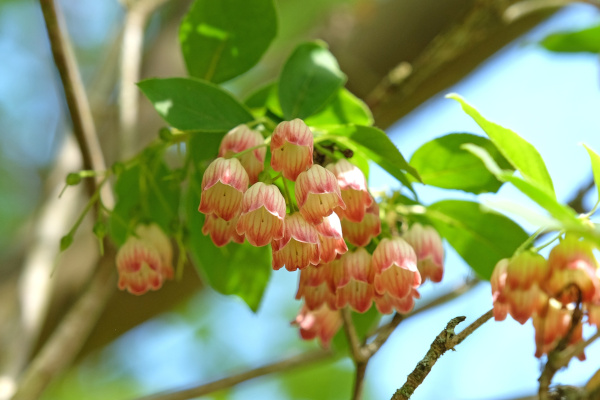
Zantedeschia is a genus of flowering plants from the family Araceae and is native to southern Africa. With a rich history dating back to the Ancient Romans, these deciduous or semi-evergreen perennials have been used as a symbol of celebration. Zantedeschia was Named after Professor Giovanni Zantedeschia, an Italian botanist.
There are two main forms of Zantedeschia: hardy and tender. Hardy forms of the plant can be grown outdoors, enjoy moist soil and full sun or partially shaded conditions - these are known as Arum lilies. Tender forms of Zantedeschia prefer being grown in containers or pots and should be brought inside over the winter - these are known as Calla lilies.
With tuberous flora in all colours from whites, yellows and oranges to deep reds and purples, Zantedeschias are not to be overlooked in any garden, as long as they have sufficient sunlight to grow in.
Ready to learn more about growing Zantedeschia? Read on for all there is to know...

Key Information
Soil pH
Position
Hardiness

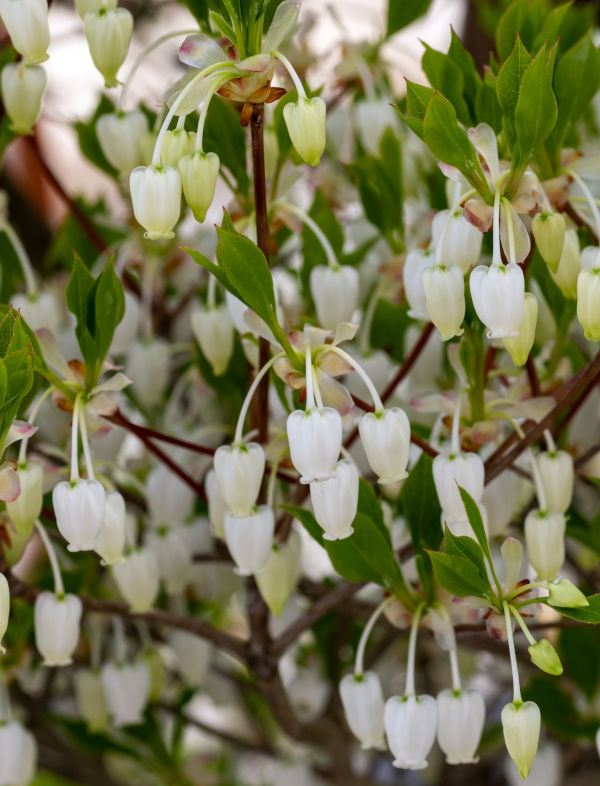
Here we list out the most popularly cultivated species and hybrids available in the U.K.
| Species | Common name |
HARDY – cold winter (H5/ -10°C to -15°C) Grow anywhere in the UK | Enkianthus campanulatus | Redvein enkianthus |
Enkinathus chinensis | Chinese enkianthus | |
Enkinathus cernuss |
| |
Enkinathus deflexus |
| |
Enkianthus pauciflorus |
|
Where & when to plant Enkianthus
Position - Full sun or dappled shade or Part Shade Sheltered location
Soil - Moist free drained soil of acidic pH. Grows in clay, loam, sand
Flower - Spring – early summer
Enkinathus can be planted all year around when purchased grown in pots.
If container grown plants are planted out during the active summer growing season make sure that they are watered regularly until the plant has settled into its new location. Water at soil level rather than the foliage.
Requiring an acidic soil and sites in full sun as long as roots are moist, part shade or dappled full sun location. Enkianthus can be planted within a border or woodland style garden. Containers filled with ericaceous compost are also a great idea where the plant can be bought into the limelight when in flower or for its autumn leaf colour. Being compact and neat plants they are great for courtyard gardens to!
How to plant Enkianthus
- For planting in the garden, check your soils pH with a test kit available from all garden centres. If your garden happily grows rhododendron, camellia, azalea, pine trees or summer flowering heather then it is likely that the soil is acidic and the correct pH for enkianthus.
- Dig the soil area removing any large stones and weeds and breaking up any lumps. Mix in some organic matter, ideally leaf mould, though manure or ericaceous garden compost are also fine. Rake level and firm with your heels. Rake level again.
- Water plants well and allow to drain before planting.
- A good tip is to dig a hole twice the size of the root-ball. Fill with water and allow to drain before placing in the plant which is especially good for summer plantings.
- Remove the plant from its pot placing the plant in the hole, ensuring the top of the root ball sits level with the surface of the soil. Too low and the plant may rot, too high and the roots can dry out. If bare root hold the plant at soil surface level allowing roots to dangle into the hole. Ensure the soil level mark on the plant stem is at the same level as the surrounding soil in its new location.
- Backfill with soil and firm in gently with your foot.
- Soak soil well with water.
- Mulch around the base with well-rotted organic matter.
- For planting in containers, first choose an appropriately sized pot around 5-7cm larger than the rootball of your plant (you’ll need to gradually increase the pot size every few years). Always ensure there are plenty of drainage holes in the bottom.
- Use a good quality ericaceous potting compost. Mix in some horticultural grit and, if not already present in the compost (check the labelling on the bag) some slow-release fertiliser granules suitable for ericaceous plants
- Start by partially filling the pot with ericaceous compost; enough so that when placed on it the upper surface of the root ball is about 3cm lower than the top of the pot.
- Fill around the plant with ericaceous compost, firming down with your fingers then adding a little more so it is held tight.
- Pick up the container and lightly tap on the potting bench or ground a few times to help further settle the compost around the plant.
- Soak well with water.
- A mulch with horticultural grit will look attractive and help to prevent a ‘cap’ or crust forming on the top of the compost (something container plants can suffer due to the artificial nature of their watering).
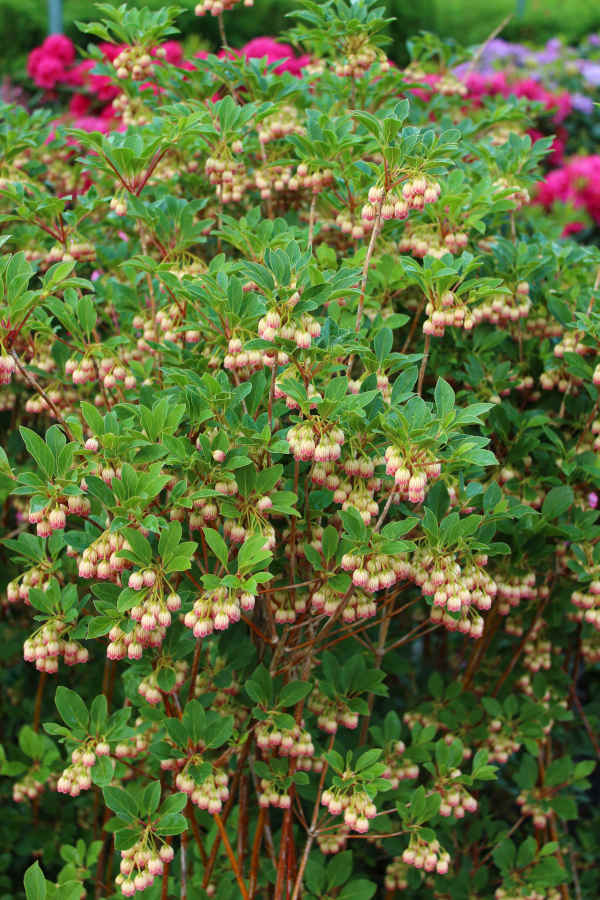
What to plant with Enkianthus
Outdoors, plant alongside plants with different shaped or coloured foliage as a contrast.
Try azalea, camellia, gardenia, magnolia, narcissus (daffodil) , iris, photinia, rhododendron and styrax.

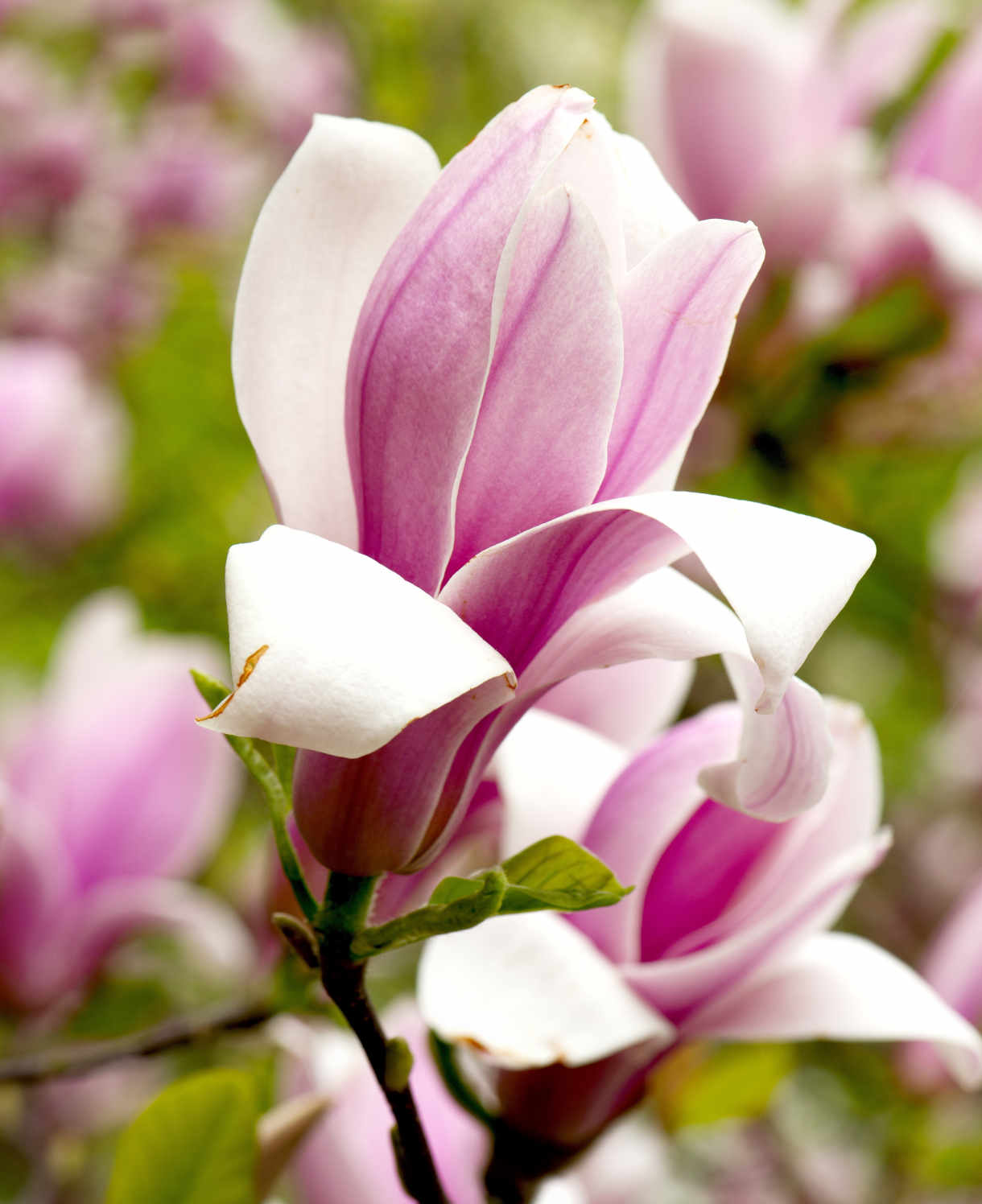
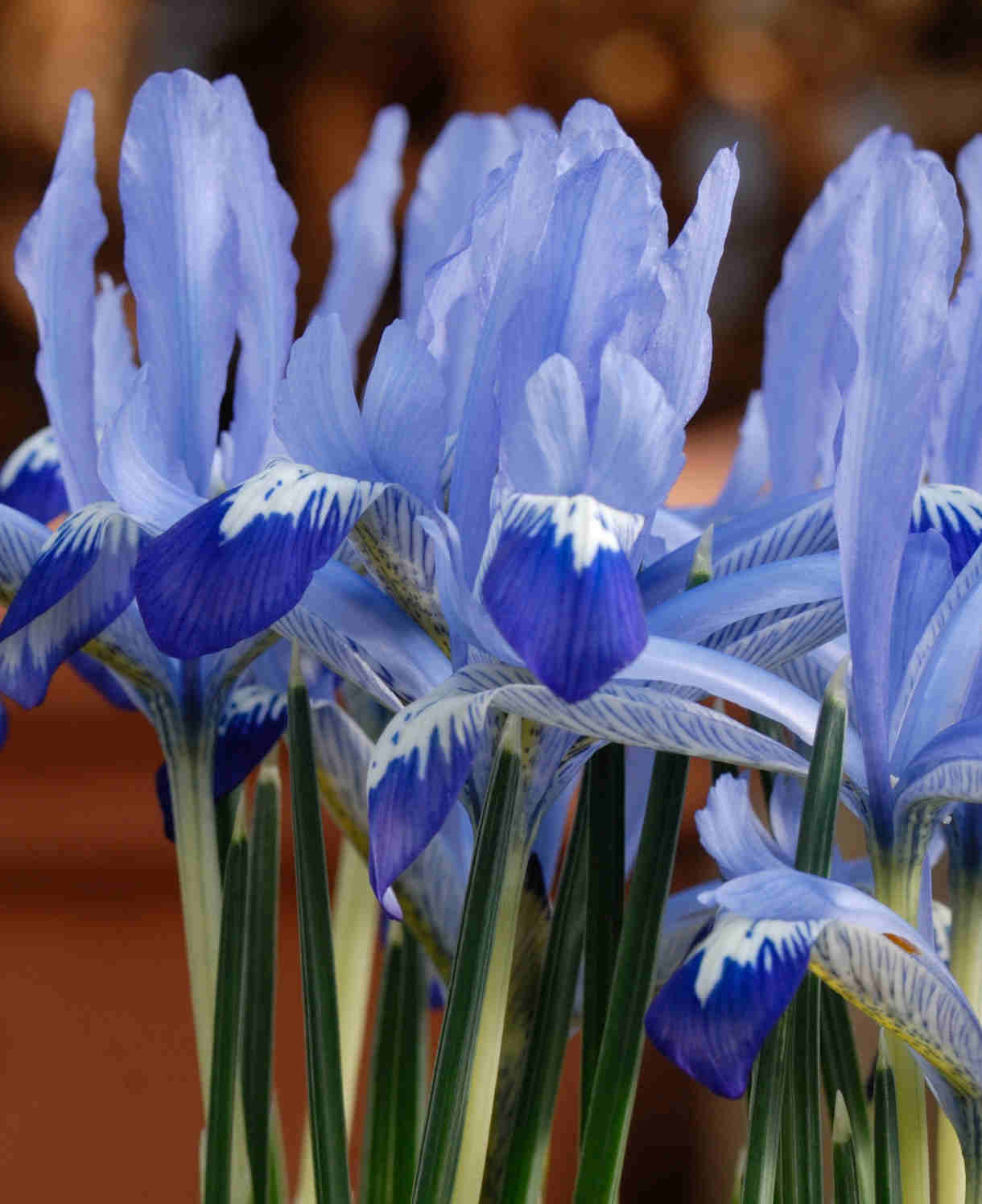
How to care for Enkianthus
Pruning and Deadheading
There is no need to deadhead enkinathus. If flowers look unsightly after flowering simply give the plant a shake so they drop off.
Enkianthus fall into R.H.S. pruning group 1.
Essentially there is no need to prune an enkianthus. Only do so to keep its size in check and to remove any damaged or unwanted branches. If required prune hard in late April.
Watering
Enkianthus enjoy moist yet free drained soil. On planting outside, they benefit from a good watering in on planting and then regular soakings until established. After this they should need watering only in very hot, dry conditions. Allowing the top few centimetres to dry out between soakings is a good rule of thumb to avoid overwatering. To check this, wiggle your finger down into the soil until you hit a cool, damp bit.
Feeding
On healthy, fertile soil, a mulch of well-rotted organic matter (i.e., a layer of leaf mould, manure, or ericaceous garden compost applied to the soil around the plant) should provide enough nutrients for your plant. This has the added benefit of suppressing weeds and locking in moisture. Mulch when planting, and then again each spring.
If you garden on poor soil or your enkianthus looks in need of a boost, apply a granular ericaceous feed to the surface of the soil and lightly working in can reap benefits. This is known as a top dress and should be done when you’re mulching in spring – first apply the feed, then cover with the mulch.
Container-grown plants are different as they rely solely on the gardener for nutrition. Get off to a flying start by making sure you use a good quality ericaceous compost with ericaceous slow-release granules mixed in. These generally provide nutrients for around 6 to 8 weeks, after which you’ll need to apply a liquid feed every 2-3 weeks until the end of the growing season (i.e., September-ish).
Remember to repot your enkianthus every few years into a slightly larger pot using fresh compost. In-between, it’s worth removing the top few centimetres of compost each spring and replacing with a fresh mix of ericaceous compost and slow-release granules.
Cold Protection
Enkianthus are hardy garden plants and should not need any protection.
Pests and Diseases
Enkinathus are rarely prone to pest or disease but on rare occasions can be effected by
Honey fungus This is a common disease which effects the base of the plant where visible signs of white mould can be seen.
How to propagate Enkianthus
Propagation by seed.
This uncommon plant is not difficult to propagate
Seed is readily available for collection in autumn which is produced in beige capsules. Each capsule has 3 -5 seeds.
Ensure the seeds are stored clean and dry and can be grown without stratification. Spring sowings tend to be more reliable than autumn sowings.
- Fill seed tray with good quality ericaceous compost. Level and firm with the bae of another seed tray. Water well.
- Carefully scatter the seeds across the compost surface of the tray
- Cover the seed to their own depth with sand or grit.
- Cover the surface of the tray with a sheet of glass or cling film to keep moisture within the tray placing in a light environment and keep at around 18-25oC ideally with bottom heat in a propagator.
- Germination should take place within a few weeks.
- When shoots are visible gradually over a 10 days remove the glass or cling film covering for longer periods of time to harden off the plants.
- Once seedlings are large enough to handle they can be pricked out individually into pots of ericaceous compost and grown on.
Propagate enkianthus by semi hardwood cuttings.
Semi ripe cuttings are selected from this seasons growth in late summer or early autumn. The base of the cutting should be hard, while the tip is still soft and flexible.
- Its Best to take cuttings in the morning to avoid wilt. Choose stems that look healthy and free of pest and disease.
- Choose a non flowering shoot which is approximately 10-15cm long from its tip.
- Using a sharp knife trim below a node (leaf joint) Remove the lower sets of leaves leaving 2 to 4 leaves at the top.
- Pinch out the soft tip to just above a leaf joint and dip the base into rooting hormone powder or liquid.
- In a ready watered and drained pot level filled and lightly firmed with good quality ericaceous compost, make a hole for the cutting with a dibber. Insert the base of the cutting until the first set of leaves are just above the surface.
- In a 9cm pot you can put 3 cuttings in a triangular formation making sure the leaves are well within the edges of the pot.
- Cover with a plastic sandwich- like-bag to form a mini propagator is a good idea for the first few weeks. Hold the bag in place on the pot with an elastic band or string. Ensure the bag is stiff enough to hold upright above the plants foliage. The plastic bag holds in moisture keeping the humidity high which reduces the rate of water loss from the cutting, increasing the success rate of propagation.
- Place the pot on a saucer away from direct sunlight, yet in a light area that is around 18-24o
- At least twice a week remove the bag to allow some ventilation to the cuttings for 15 minutes. Check the soil surface feels damp.
- Rooting takes 2 to 4 weeks. Gently pull on one of the cuttings if it shows resistance then it is likely roots are forming. The bag can now be removed for longer periods of time gradually acclimatising the cuttings to their surroundings. (Hardening Off)
- Remove any dead or decaying material regularly. Increase ventilation to remove excess moisture.
- Once hardened off for 2 -4 weeks the cuttings should be ready for potting on individually. Carefully remove the plants from the pot as one root ball. Checking for signs of good rooting - if not ready leave to develop for few more weeks. Carefully separate each cutting ensuring a good portion of root is kept intact potting on into individual 9cm pots. Water well and leave to develop in a light sheltered environment until established.
* Many plants carry Plant Breeders Rights and cannot be propagated for commercial purposes.
Common Enkianthus questions
How tall does ekianthus grow?
Depending upon variety enkinathus grow from 1m to 3m height and spread.
When can I move enkianthus?
Enkinathus are best moved in late winter or early spring before leaf bud breaks. Dig around and under the plant at least 1/3rd of its height. Follow instructions for planting above to re plant.
Is enkianthus decidous?
Yes almost all species of enkianthus are deciduous losing their leaves in autumn with new leaves growing in spring after winter dormancy.





